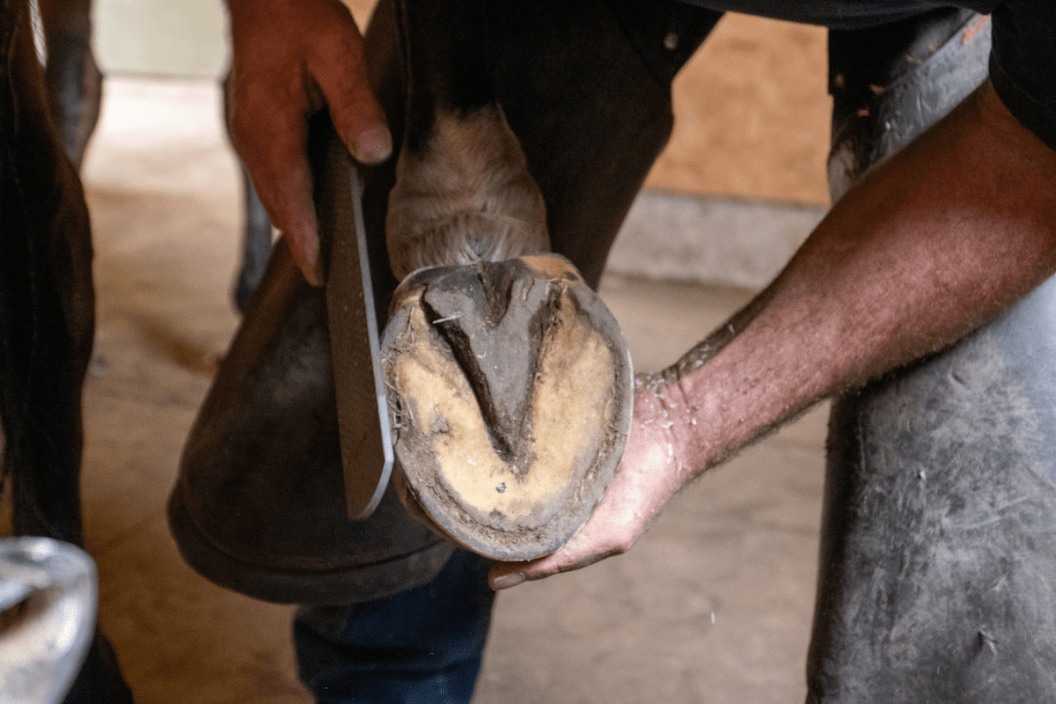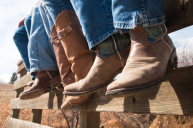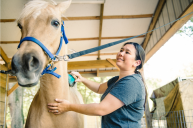Horses come in a variety of colors, breeds, and types of beauty. Each horse is unique and has different needs, depending on what they're used for, what their disposition is, and how often they're ridden. If you've spent even a little bit of time around horses, you've probably noticed horseshoes. Do horses really need them? And why do we put them on horses?
The easiest way to think about horseshoes is that they work a lot like fingernails on people. Farriers (horse experts that specialize in putting shoes on a horse) trim horse hooves to make sure they don't grow too long. Long horse hooves can cause injury. After being trimmed, shoes are put on to protect the hooves from further damage. This is a lot like getting a protective clear coat of nail polish on your own nails at the salon.
So, who puts on the shoes? The farrier is responsible for making sure the hooves stay healthy. Farriers use small nails to hold the shoe on the hoof. Fortunately, the nails don't hurt the horse. The nails are driven into a part of the hoof where a horse can't feel them. Once horses have shoes on, we call them shod.
Not all horses need shoes, and it's up to a case by case bases as to whether a horse needs to be shod. Here are some of the reasons you might want to have your horse shod.
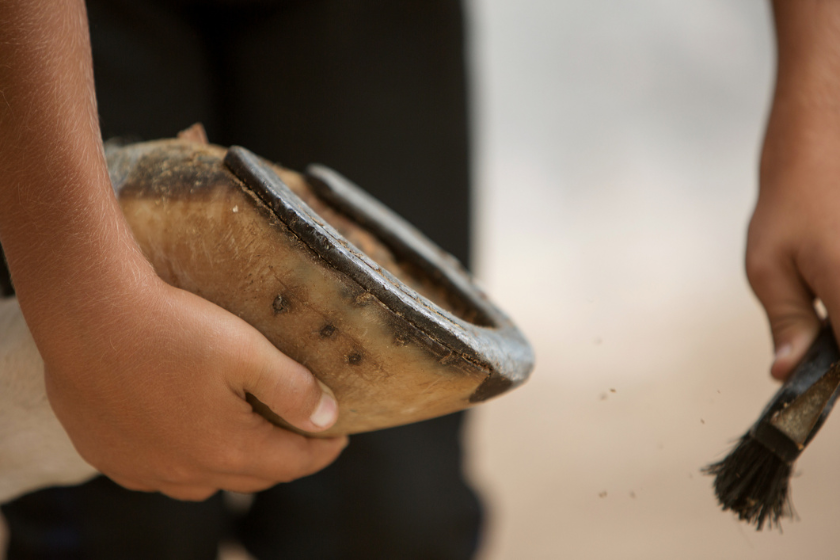
1. Balance Issues
If your horse has balance issues it could benefit from being shod. Imbalances in the gait can be made much worse if the hoof is not supported and balanced correctly. Proper assessment of your horse's hooves by a professional can help you judge if your horse is a candidate or not for this type of horseshoe. This is a lot like getting a special pair of orthotics for your shoes if your foot isn't the most healthy shape in the world.
2. Poor Foot Growth
You are what you eat, as they say. And a horse without a proper diet won't grow correctly. If you've noticed a horse struggling to grow, an imbalanced foot might be a possible culprit. Poor growth means your horse will have problems on harder surfaces. This problem means that your horse is definitely a candidate for shoes.
3. Age
Age plays a role in whether you should shod your horse or not. Younger horses have hooves that are more malleable, which means they can be shaped into the best possible version of a healthy foot while still young. Think of shoes for your young horse like braces are for your teenager! This is a great opportunity to fix gait imbalances while young.
4. Weight Issues
Horses come in all kinds of sizes, and a lightweight pony won't have the same issues on hard ground as a heavy breed. Hooves expand and contract as they come into contact with the ground. Like tires, hooves absorb shock and distribute the bodyweight evenly. Hooves provide protection for internal structures as well. If you have a particularly heavy horse, he might appreciate the extra coverage on his feet.
5. Problems or Disease
Diseases and other problems can cause horses to need shoes. Horses with arthritis, laminitis or ringbone typically require shoes. Unfortunately, some of these diseases can make being shod an issue in and of itself, as damaged hoof structures aren't sound enough to endure the process. Fortunately, there are a variety of materials that farriers can use to shoe a horse, and many of these can be used instead to help horses with special issues.
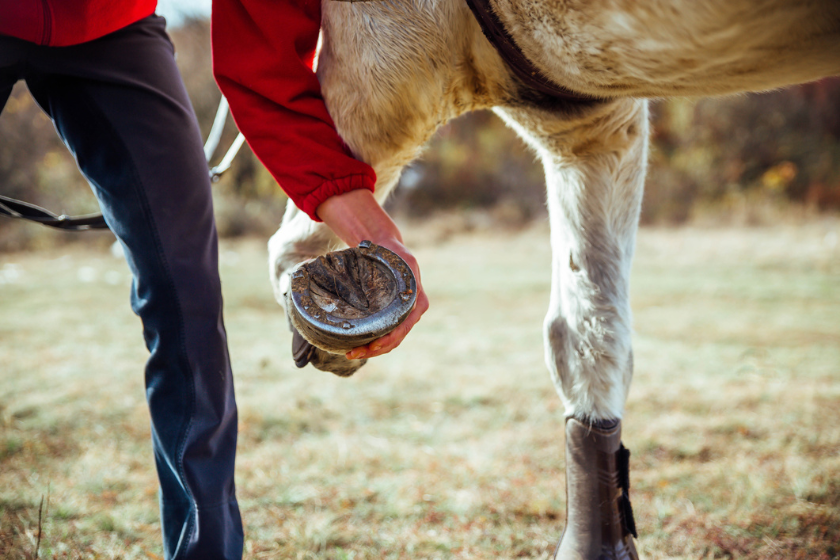
Horses that are out on pasture don't necessarily need shoes, and many horse owners say that barefoot is best.
Ultimately, shoeing has its pros and cons. A horse's hoof is complicated and horseshoeing is an art and science according to most farriers. Wild horses don't wear shoes so many make the argument that barefoot makes the most sense.
Whichever direction you go, it's all about making sure your horse is well cared for. Hoof problems can kill a horse, so it pays to take this issue seriously. Defer to the farrier about your horse's foot and what's best for your horse's lifestyle.
Does your horse wear shoes? Tell us on the Wide Open Pets Facebook page!
This article was originally published December 24, 2019.
